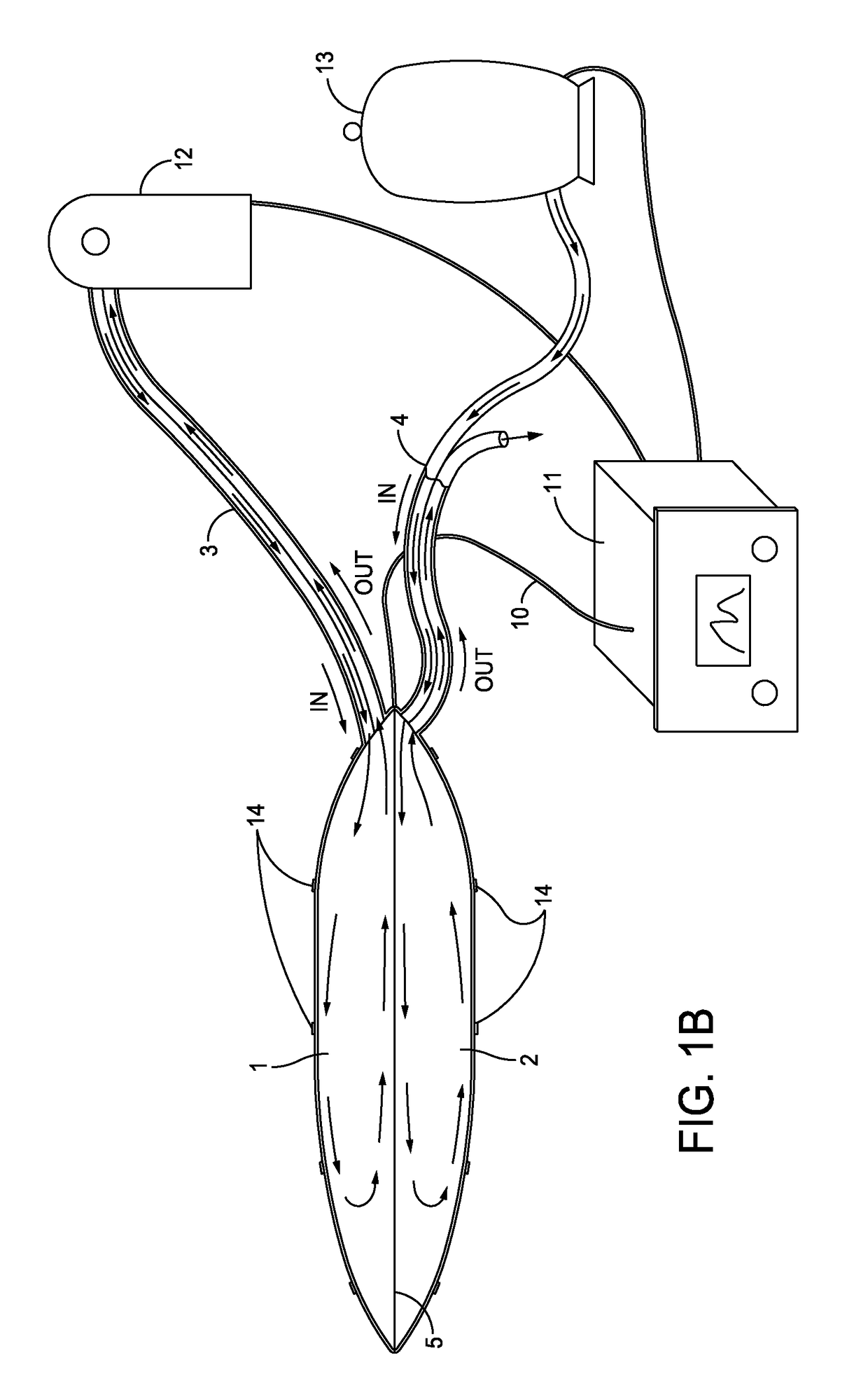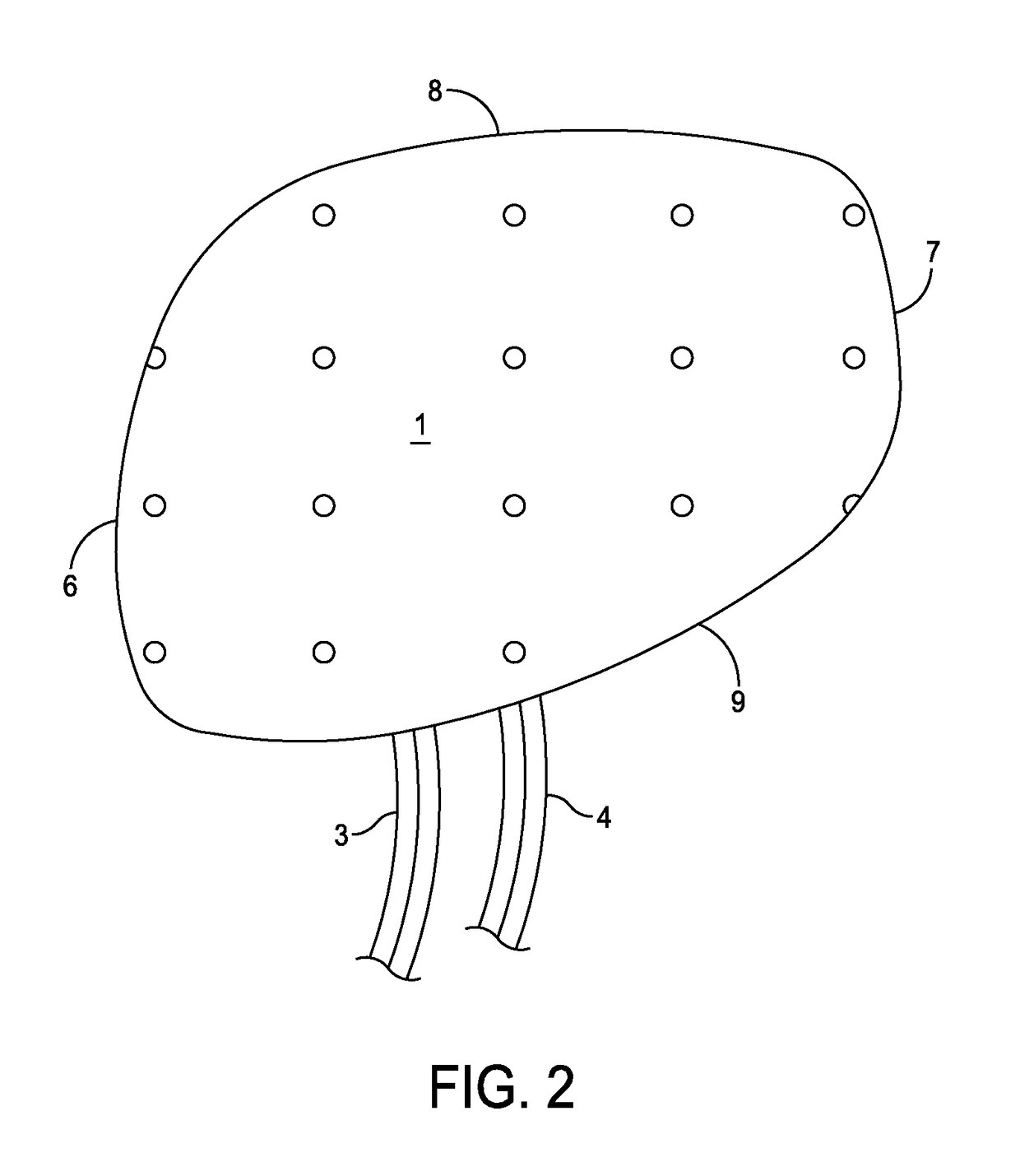Action/counteraction superimposed double chamber broad area tissue ablation device
a broad area, tissue ablation technology, applied in the field of action/counteraction superimposed double chamber broad area tissue ablation device, can solve the problems of inability to treat successfully the more persistent forms of atrial fibrillation, the risk of other organ injury is small, and the tools are somewhat limited, so as to facilitate the implementation.
- Summary
- Abstract
- Description
- Claims
- Application Information
AI Technical Summary
Benefits of technology
Problems solved by technology
Method used
Image
Examples
Embodiment Construction
[0027]A device for simultaneous ablation of a relatively large surface area of tissue whose shape can be in contact with much or all of the available surface area of the posterior (back) wall of the left atrium is disclosed herein. The device can be polar, having a front surface and a back surface, with only one surface intended to be in contact with the posterior left atrium, and the other surface being opposite the posterior left atrium. Generally, the device shape can be non-linear, and the front surface and the back surface can be flat or convex and exceed six cm2 in surface area. The shape of the posterior left atrium can be complex and eccentric, but generally can be considered to be similar to a quadrilateral with non-parallel sides and rounded edges, with a tapering and increasing inferior aspect moving from right to left.
[0028]In one embodiment, a device that can thoroughly ablate the entire left atrium in ideally one ablation, or, for example, in less than four ablations, ...
PUM
 Login to View More
Login to View More Abstract
Description
Claims
Application Information
 Login to View More
Login to View More - R&D
- Intellectual Property
- Life Sciences
- Materials
- Tech Scout
- Unparalleled Data Quality
- Higher Quality Content
- 60% Fewer Hallucinations
Browse by: Latest US Patents, China's latest patents, Technical Efficacy Thesaurus, Application Domain, Technology Topic, Popular Technical Reports.
© 2025 PatSnap. All rights reserved.Legal|Privacy policy|Modern Slavery Act Transparency Statement|Sitemap|About US| Contact US: help@patsnap.com



